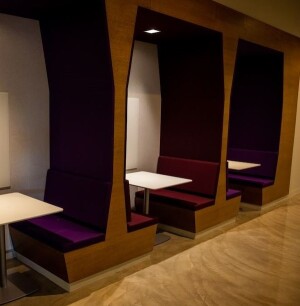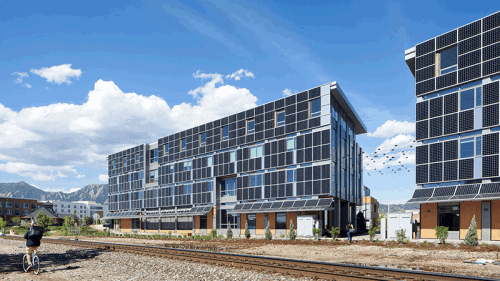This article was produced by Moody’s Analytics CRE
How, where, and why offices are used and designed has constantly evolved for over 100 years. Yet no era unearthed more questions than today’s post-COVID world as firms and employees try to navigate the transformed office landscape. We will break down some common questions employers have and our answers to them.
Today, workforces crave flexibility. To meet those needs, owners, lenders, and tenants must consider the entire building, the activity-based settings, and facility planning. Surrounding neighborhoods and amenities are now features of the workplace, not just the tenant-occupied space.
Workers today value a broader array of work settings, such as flexible space, as well as on-site and local amenities like gyms, green spaces, and more.
What will it take to bring workers back to the office?
For remote office workers who are still geographically able to commute to the office, it may take the combination of an attractive, optimized office environment and enhanced productivity from in-person interactions for certain office tasks. Owners and tenants directly benefit as well. Property owners may reap the most value for their buildings while tenants support their workforce to achieve those productivity gains.
The need for offices will not go away as some might suggest. Instead, it will be reimagined for both productivity and adhering to new health and safety protocols. In fact, hundreds of companies are already rolling out new products to support healthy workplaces and better integrate buildings with public health policies. These enhancements alone will not draw employees back to the office but are a necessary first step to make employees feel safe and comfortable walking through the doors again.
While there’s little doubt that some work can be done remotely and is even more efficient without office interruptions, employee onboarding and collaboration are most effective in the offices. Dense, crowded communal workspaces were already proving to be less productive pre-COVID-19. Moving forward, tenants want flexible working arrangements and spacing as well as additional meeting rooms and flex spaces to meet social distancing requirements and quiet individual work time.
Doug Ryker, Moody’s global managing director of Real Estate and Workplace Strategy, shared how he has seen this trend firsthand: “From a physical space perspective, the need for greater collaboration space is key to getting employees to return to the office. Long gone is the five-day workweek where staff will come to the office, plug in at their desk for heads down work, with a meeting or two mixed in throughout the average day. Employees are now looking to the office for a place to meet up with their co-workers and collaborate or even innovate. Right now, companies are providing short-term incentives such as free meals or social events to allow people to reconnect following a long stretch apart, but the impact of such will fade. Employees want to work in spaces that really foster these types of in-person interactions.”
What accommodations will my office need?
Firms may need flexible leasing arrangements in addition to their traditional leases. If needs change on a whim – daily, weekly, monthly, and even yearly – flexible or coworking office space may be the answer.
Building owners must either provide or partner with those who can provide the amenities necessary to operate flex space. The services needed will mirror a hotel’s, with various levels of service like hospitality brands that offer different brand tiers. Amenities such as meeting spaces, food and beverage options, health and cleanliness processes, and technology capabilities like virtual reality and larger screens for videoconferencing will no longer be aspirational bonuses but expected and commonplace.
What office amenities are the biggest draws right now?
According to Ryker, “The biggest thing that I have seen recently is the promotions around wellness. [Moody’s] occupies leased spaces around the globe and one thing that I see our landlords offer is access to gyms, yoga studios, additional bicycle racks, etc. to promote health and well-being.”
Large building owners are more likely to efficiently identify and integrate building improvements as new technology becomes available, but all property owners should be reassessing. As occupier demands grow more diverse, landlords must come to the table with a flexible and creative perspective of the tenant’s unique needs. One size does not fit all, even within firms for distinct groups or business units.
How must office occupiers adapt to this new way of working?
For most companies, the days of a rigid five-day, 9-5 workweek are behind them. Building occupiers must accept this and create a flexible, purpose-driven workplace in response.
“The way I see staff leveraging physical office space is really to support collaboration and innovation. We are seeing it in recent attendance data. Office attendance without a distinct purpose isn’t going to draw people back in. Networking events, strategic planning sessions, and collaborative workshops give people a reason to make that commute,” said Ryker.
More productive meetings, mentoring, and stronger social bonds are just a few opportunities that employers simply cannot replicate with a Zoom happy hour. Office locations enhance corporate culture and the so-called “weak bonds” of a company—those interactions with colleagues you do not normally work with, but see in the coffee or breakroom sporadically. These weak bonds reinforce the culture, cultivate a sense of purpose, belonging, and community, and lead to greater employ retention and loyalty (assuming a healthy corporate workplace environment). The Harvard Business Review pointed out, “Employees that work hybrid or remotely have fewer friends at work and thus weaker social and emotional connections with their coworkers. These weaker connections make it easier for employees to quit their job by reducing the social pressure that can encourage employees to stay longer.”
What sort of technology is expected in the office of the future?
“Moody’s is experimenting with several different technology solutions to support a hybrid working model,” said Ryker. “This will be an interesting challenge: a fully remote meeting has screen equity with all are on a video conference. When conducting a hybrid meeting, we need to invest in higher-end technology as well as a new set of behavioral norms: eliminate side conversations, carrying the conversation out of the room, leaving out those remote, etc. The solutions that we are investing in still need to be tested as we shift into the next phase of returning to the office.”
This trend of office exploration isn’t limited to just Moody’s. According to PwC nearly half of CEOs say they plan to increase their long-term investment in digital transformation by 10 percent or more. That includes technology solutions to support higher levels of remote working, such as productivity analytics and collaboration suites that bridge the gap between people who regularly work in the office and those who work remotely.
The future of the office is hard to predict, but the smartest players in real estate are asking the right questions, collecting the data, and thinking about how to react for different scenarios. Are you?
For more commercial real estate insights and analyses, visit the Moody’s Analytics CRE blog.
Follow Moody’s Analytics CRE: LinkedIn | Twitter
Author: Jeffrey Havsy is commercial real estate industry practice lead in the Risk Solutions Practice with Moody’s Analytics.






